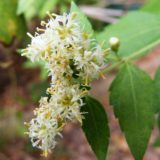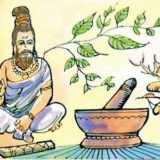Sacred Herbs Used by Religious Tribes
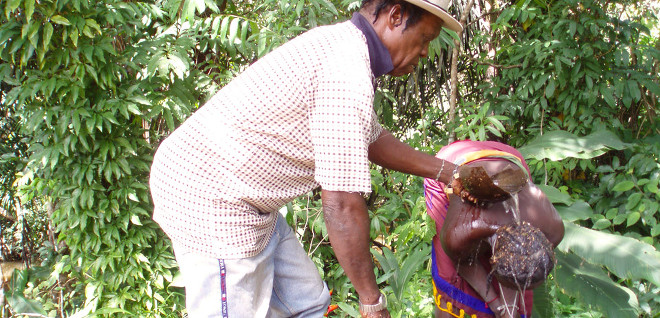
Are Some Plants Spiritual or Sacred In Value?
Intertwined with the fabric of history in nearly all cultures throughout time is the use of plants and herbs in religious ceremonies, important celebrations, and spiritual journeys. Many cultures and religions alike have recognized notable spiritual significance surrounding the origin, existence and/or use of certain plants. It is especially important to understand that not all plants have sacred value in these cultures. The cultures which have valued plants in a sacred sense, have been very selective in which plants are valued in such a way. In fact, the plants that are worshiped, celebrated, ritualistically employed, feared, or otherwise held sacred, have proven to become very prominently displayed throughout the history of their respective cultures. They can be found proudly portrayed in paintings and artwork, literature, folklore and storytelling, and heavily laced throughout the culture.
How Are Sacred Plants Used In Religion?
So many religions throughout history (and present-day practices) involve the use of sacred plants for one purpose or another. There are plants that are considered food for the gods, especially hallucinogens. The theory is that the hallucinogenic effects are for beings or gods that are “beyond this world.” Some of the folklore surrounding plants being food for the gods seem to be more common among fungi and mushrooms. Maybe they are more easily detectable in these categories as anomalies due to their invasive nature. Many of the hallucinogenic mushrooms and fungi has ‘infected’ otherwise normal plants or territory. If weird mushrooms appeared on wood that has been seen every other day for months, or a strange fungi took over a field of rye one is used to harvesting on a regular basis, it would be very easy to explain in the Old World and ancient times as divine in some way.
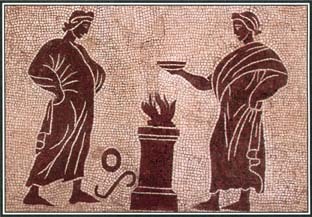
There are some stories that suggest the gods have provided certain sacred plants as a way of helping man heal. Many of the plants that have been found to have medicinal properties are often found among medicine men of even the oldest tribes on Earth. There are some intricate religious ceremonies that sometimes surround the ingestion of a simple herb or concoction of plants that otherwise could do the job just fine by itself (without the ceremony). The natives surround the plant with the ceremony in association with the god(s) that they believe have provided the herb or of which respond to the herb.
A lot of “spiritual” or otherwise sacred plants are suggested to have given certain cultures and Indian tribes the ability to spirit walk, leave one’s body, or astral travel. Usually these travels are used to communicate with ancestors, gods, or spirits of some other nature. It is almost always for prophecy, to ask questions about the past, or to gain an advantage of some kind for one’s tribe. Sometimes the plant induces deep trances and visions, other times it is used to create deep slumbers full of vivid, divinatory dreams. In traditional shamanic fashion, people around the world today use many of these spiritual herbs for self-exploration and to have spiritual awakenings.
Some herbs or plants are considered sacred to a religion or culture for its social contributions. There are some plants which are intensely significant to a religion but are dominantly used during celebrations and social events. Sometimes the natives believed the gods provided the plant specifically to promote celebration and human-to-human interaction, in other cases, cultures or religions frown upon the use of some plants for social or recreational use, specifically as hedonistic (yet they are frequently indulged upon anyway).
List of Plants Considered Sacred in Religion or Culture
These plants are considered to be spiritual, sacred or otherwise significant in a particular religion or culture. They all have been culturally recognized (somewhere) for their exceptional or extraordinary properties or effects, and usually specifically in association with divine entities. These plants are in alphabetic order.
 African Dream Root
African Dream Root
Aka Silene undulata
Very obviously native to Africa (specifically South Africa and Eastern Cape), this plant is well-known by the Xhosa tribe to be sacred. According to shaman of the tribe, it can be used to induce prophecy, lucid dreams and is also a part of the shaman-initiation ceremony for the tribe.
Ayahuasca
Aka Banisteriopsis caapi
Ayahuasca is typically a mix of many herbs and plants, though Banisteriopsis caapi is the most dominant (and most important) ingredient, containing DMT. DMT is also known as “the spirit molecule,” due to the intense, highly-spiritual “trips” one has after ingesting the substance. Many tribes of the Amazon, especially in Colombia and Ecuador, have employed Ayahuasca for religious or spiritual purposes for thousands of years.
Badoh Negro, Piule
Aka Ipomoea violacea
Badoh Negro has been employed by natives of Mexico for thousands of years, dating all the way back to the Ancient Aztecs. It is used as a hallucinogen and is very common in religious and shamanic rituals for divination and curing.
 Blue Water Lily, Blue Lotus Flower
Blue Water Lily, Blue Lotus Flower
Aka Nymphaea ampla
Blue Lotus Flower has gotten a lot of attention lately, and rightfully so, as it has been found highly significant to the Ancient Egyptians. Blue Lotus has been employed by a medicine, hallucinogen, sedative, narcotic, intoxicant, and for religious purposes. The plant has been associated with death, and is very commonly present in shamanic ceremonies throughout Egypt (even today).
Colorines
Aka Erythrina americana
These are special beans that are frequently sold throughout Mexico. They are typically used with Mescal Beans but have strong spiritual significance in the Tarahumara tribe. They are also used to make spiritual charms and amulets.
Cowhage
Aka Mucuna pruriens
Cowhage is a widely known and used herb for many purposes. It is very common, however, among many Shaman in a number of tribes throughout India. It is very popularly mentioned in Ayurvedic medicine. Cowhage can be found in a number of spiritual charms and amulets as well.
Deadly Nightshade
Aka Atropa belladonna
Belladonna is a dangerous herb that has been feared by many throughout history. It is native to Europe and has strong significance in European witchcraft, especially in the Middle Ages. The plant is well regarded as a sacred herb, and most people stay away from it.
Ergot
Aka Claviceps purpurea
Ergot has deep history, being mentioned even in Ancient Greece. It has been associated with poisoning incidents in the Middle Ages which gave it the nickname “St. Anthony’s Fire.” Although it is a hallucinogen, it has instead been considered spiritual for its growth patterns throughout Europe.
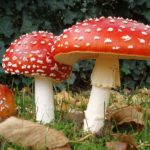 Fly Agaric Mushrooms
Fly Agaric Mushrooms
Aka Amanita muscaria
Fly Agaric mushrooms are some of the oldest used hallucinogens or psychoactive plants in recorded human history. The oldest incident of sacred association is over 3,500 years ago by the Aryans. It is most likely a part of the god and narcotic referred to as “Soma” in Ancient India. Fly Agaric mushrooms have been present in shamanic rituals and ceremonies for divination, healing and other religious purposes for thousands of years, and are still being used today.
Henbane Nightshade
Aka Hyoscyamus niger
Henbane is one of the most sacred herbs known to the Middle Ages. It was used for a number of medicines and in a lot of tonics. It has also been used for many witches brew recipes. It was a part of a lot of medicinal and magical drinks alike in Ancient Greece and Ancient Rome. It is associated with the priestesses of Delphi and prophecy. Henbane is still considered a spiritual and sacred plant to many cultures around the world today.
Salvia, Hierba de la Pastora
Aka Salvia divinorum
Salvia is capable of giving its users extremely realistic and vivid visions. These visions are typically lucid and may seem like several minutes, several hours, several days or even several years…despite the fact that each “trip” typically only lasts a few seconds to a few minutes. This herb has been used as a narcotic, for a medicine and in religious ceremonies for hundreds, perhaps even thousands of years. It is employed most heavily by the Mazatec and other Aztec tribes of Mexico.
Jurema
Aka Mimosa hostilis
Jurema is native to Brazil and is used to be commonly employed in religious ceremonies throughout the area. Today, the use of Jurema in a ceremonial setting has nearly entirely disappeared, although there are reportedly a few shaman who still maintain connection with the rituals. Jurema was most commonly connected with war, and thus employed before war as a source of power. For this reason it has been known in the area a ‘miraculous drink.’
 Kanna, Channa, Canna
Kanna, Channa, Canna
Aka Mesembryanthemum expansum
Kanna was first noted by Dutch explorers in the 1800s. The Hottentots of South Africa, however, have known about the plant for thousands of years. They smoke the roots and leaves, or sometimes chew them, to induce hallucinations and have spiritual experiences. Kanna is used today more frequently as a sedative or an intoxicant, rather than for its spiritual-hallucinogenic properties; though it remains sacred to the Hottentots and similar tribes native to South Africa.
Kava Kava
Aka Piper methysticum
Kava Kava is an interesting, versatile plant cultivated in tropical and subtropical regions of the world. It is so popular in some areas that they have replaced alcohol and alochol bars with kava and kava bars. Kava can be stimulating in low doses and sedating in high doses, but it is most definitely considered sacred to many tribes around the world. Kava has been associated with ceremonial use, both in celebrations and also for shamanic purposes.
Kieli, Hueipatl
Aka Solandra brevicalyx
Kieli is very easy to find among the Aztec tribes of Mexico. The Indians of these tribes associate the plant with ancient mythology and use it as a symbol of sorcery, and Kieli, a god in the area. It is usually feared, but is also sometimes used as a narcotic. Kieli is a strong intoxicant, and in some regions has been commercialized as such.
Mandrake
Aka Mandragora officinarum
Mandrake has a lot of presence in witchcraft folklore throughout the Middle Ages. It was used as an incredible hallucinogen in the Old World, although typically feared for its association with witches brews. Mandrake was also used in many tonics, even authentic, recognized medicines. Regardless of how versatile Mandrake may be, it was and still is very commonly accepted as a spiritual, magical plant.
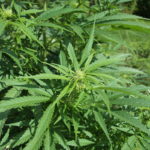 Marijuana, Cannabis
Marijuana, Cannabis
Aka Cannabis sativa, Cannabis indica
Cannabis has different stigma, different cultural acceptance, different religious-magico purposes, and different history in each region of the world. Some records indicate knowledge and use of Cannabis as far back as 5000 years ago. Ancient Egyptian civilizations used and considered Cannabis sacred. The Ancient Thebes of Greece considered the plant spiritual and used it in a narcotic-like drink concoction. The Scythians created powerful intoxicating steam baths with the plant. China records uses and religious significance for thousands of years. There is even strong religious significance for Cannabis in India.
Mescal Bean
Aka Sophora secundiflora
The Mescal Beans are super sacred throughout many cultures and religions in much of human history. In fact, there is recorded use of their consumption in religious rituals as far back as 9,000 years ago! Many Native American tribes in the United States, especially in Iowa (and the Arapaho tribe) have considered the beans sacred. They are frequently used to induce vision-seeking ceremonies which are usually in the form of dances and celebrations. This makes sense considering the beans are typically reported to have hallucinogenic and divinatory effects. They can be dangerous in high doses and are well known to leave some people who over-indulge dead.
Ololiuqui, Xtabentum
Aka Turbina corymbosa
Ololiuqui is very significant among the Aztec tribes and many other Indian cultures of Mexico and Central America. It is frequently employed as an intoxicant but gives the users strong LSD experiences that are frequently associated with divination and prophecy. The plant also has a lot of history being used in witchcraft, and thus is considered powerfully spiritual and sacred.
Peyote, Hikuli
Aka Lophophora diffusa
Peyote grows mostly in Mexico, however, can be found in Southern Texas and in some Central American territories on occasion. The Tarahumara, Huichol and many other Mexican Indian tribes have used the cactus for its powerful hallucinogenic effects. It has been used to induce visions, spirit walking, and for self exploration. It is considered sacred by the Native American Church in the United States and Canada. The mescaline is what is responsible for the hallucinogenic properties.
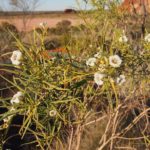 Pituri Bush
Pituri Bush
Aka Duboisia hopwoodii
The Pituri plant has been employed as a religious, spiritual, medicinal and recreational drug, with the earliest recorded use dating back over 40,000 years. It is native to Australia and is still commonly employed as a social drug. Shaman of ancient and modern tribes alike have used the leaves to induce dreams or visions. The plant is considered spiritual in many religious sects of the region, but is also considered a narcotic.
San Pedro Cactus
Aka Echinopsis pachanoi
Often regarded as the second most sacred cactus (and second most powerful), next to the Peyote, San Pedro is quite renown itself. It grows fast, spreads fast, and is native to the Andes mountain range. It is prominently used in Andean medicine, having a history of use dating back thousands of years. San Pedro is considered sacred by many tribes, starting almost 2000 years ago with the Moche people.
Syrian Rue
Aka Peganum harmala
Syrian Rue is native to the Asia Minor, and also grows abundantly in India. Many cultures and tribes of these areas have considered Syrian Rue to be of powerful religious significance. It is a hallucinogen and aphrodisiac, as well as having many medicinal uses. The seeds are typically referred to as Harmal, an Indian drug they constitute. It is a common incense, is used by shaman for several types of rituals and is considered sacred in many tribes.
Takini
Aka Helicosylis pedunculata
Takini is most commonly known in the Guianas, the Northeastern-most parts of South America (heavy Dutch-Spanish colonial interference 400-500 years ago). It is known by the tribes of the region to be an intoxicant, a poison, and a number of medicines. It is considered a sacred tree by most natives of the areas.
Teonanacatl, Tamu
Aka Conocybe siligineoides, Panaeolus sphinctrinus, Psilocybe acutissima, Psilocybe cubensis, and more
Otherwise known as “Magic Mushrooms” or “Shrooms,” these mushrooms have long been worshiped and regarded sacred for thousands of years. The Aztecs and Native American tribes, as well as several Amazonian tribes have depicted mushrooms as spiritual plants, often associating them with gods. There are paintings, drawings, literature, pottery, clothing, symbols, and stories that all surround the sacred value of mushrooms and how they relate the heavens, the gods, other worlds and/or spiritual beings. They are similarly considered spiritual or sacred in other cultures around the world where they can be found growing in lower quantities (than in the Americas, mostly South America, in fact). They are used for their hallucinogenic effects, in divination, and in several healing rituals.
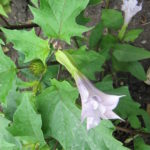 Thorn Apple, Jimsonweed, Datura
Thorn Apple, Jimsonweed, Datura
Aka Datura stramonium
Datura is one of the most feared plants of the Middle Ages and the Old World. It was very commonly employed in Old World-witchcraft and has been associated with many poison recipes and poisonous concoctions. It has also been used as a hallucinogen by the Algonquin Indians (Native Americans, North America). It is commonly Called Datura or Thorn Apple in Europe, but had been known more commonly as Jimsonweed in America. Jimsonweed was responsible for poisoning nearly an entire colony of settlers in Jamestown, Virginia. The plant has always had spiritual significance, in all regions by which it is native.
Tobacco
Aka Nicotiana (genus)
Tobacco has been used by Indian tribes of North, Central and South America for hundreds, perhaps thousands of years. The plant was found dried and employed via pipe in many special Native American ceremonies. Because the roots grew very deep and the smoke from the pipe stretched very high into the sky, it was often regarded as a sacred plant capable of connecting worlds together. Tobacco is one of the most widely smoked plants still today.
The History of Sacred Plants Continues
As time moves forward, more history is created. Human beings have never stopped exploring, reaching out for more and to understand the great unknown. Botanical exploration has always been a large part of tribal culture, and has seeped its way into modern, Western cultures by way of recreational use. Still, many recreational users today cannot deny the very spiritual experience they have had while using some of these plants.
Many of these plants have been responsible for changing lives and giving people entirely new perspectives. Many of these plants have given people spiritual epiphanies. And a lot of users claim a legitimate ability to communicate with the gods, the deceased or other spiritual entities after ingesting or otherwise using some of these plants. Thus nearly every user will acknowledge the special value these plants possess, and most users will learn to respect the plants if they had not before. Some may call the plants sacred, others may say they are of religious significance; but most people who have experienced these plants, will at least admit they seem spiritually important in some way. No matter who is experiencing the “trip”, the “out of this world” capabilities of these plants cannot be ignored.

